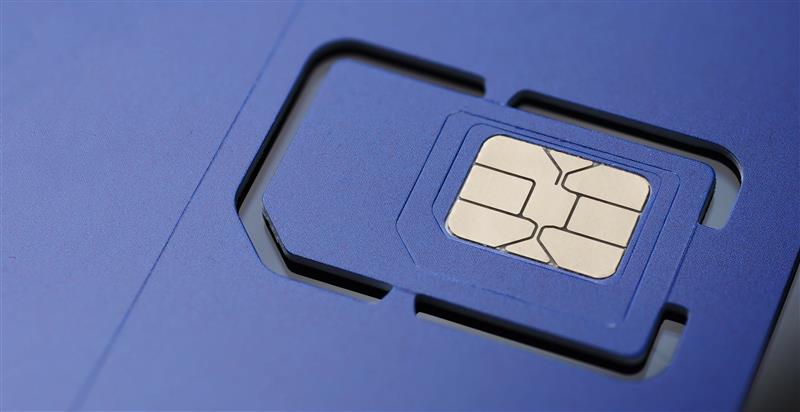The most challenging thing about IoT is that every use case and device is different. Yes, there’s patterns. But they are nuanced for every business case, every device, every use case.
At Eseye, we do a lot of remote patient monitoring, we have customers like Telli Health and Biofourmis. And while cost is important, it’s not at the expense of resiliency and uptime, right? You need 100% uptime if it’s a heart monitor.
We have other customers like Brambles, who do pallets. Link Labs asset tracking. And while resilience is important to them, they can tolerate some downtime when they’ve got 100,000 or a million devices. So, every application has slightly different requirements and different needs. And that results in very different optimisation needs. How I design and optimise connectivity, for example, with that device.
If I look at my career at Accenture, I focus a lot on how to operationalise both large enterprise and service provider networks. But if you look at IoT, it’s very difficult to operationalise at the edge, at scale. It requires a very unique set of combinations of device, compute, processing, network and security skills to effectively manage the edge. And they all need to be combined interdisciplinary.
In this blog, I’ll cover off some of the universal IoT challenges that impact every industry with real examples from the customers we work with.
Why connectivity has always been a challenge for IoT
Connectivity has absolutely been a challenge. Kaleido Intelligence ran a study that we and some other MVNOs sponsored last year, and they interviewed 750 enterprises around the globe on IoT connectivity. They identified there’s a lot of roaming challenges, which is a problem if you want to deploy IoT globally. There are certain geographies that don’t allow IoT to roam. The roaming model was really designed for the consumer market. Countries like Brazil, China, India, even Australia, have regulatory barriers about roaming. You have to localise in these environments to overcome permanent roaming issues. There’s a whole bunch of low-powered network technologies, like in the cellular world, NB-IoT (Narrow Band Internet of Things) and the Cat M1, or LTE-M are two examples. And to use low-powered networking as well as the optimisations around it, you have to localise.
In many cases, the devices in these deployments operate on batteries. Our customer, Itron, specialises in gas and water meters, and their devices need to be out in the field for about 15 years. It’s very expensive, obviously, to do a visit to replace the battery. They realised the top issue was actually the device. How do I design the device to be out in the field for 15 years if necessary? But how do I design the connectivity in the device to provide secure, resilient, manageable connectivity? A lot can change in 15 years. How can you go about future proofing not only the device but the connectivity to plan ahead for changes in the landscape? Connectivity has always proven difficult, and the market continues to be very dynamic. You have to deal with the ebbs and flows and take advantage of new technologies.
Multi-radio access type (RAT) connectivity is the answer in many cases. It provides more connectivity options, increased flexibility and network resilience. Enterprises love it because it very much offers a mix and match approach to connectivity. For example, combining cellular communications with other wireless protocols including LoRaWAN, Thread, Zigbee or Wi-Fi.
Enterprise IoT
IoT is really starting to take off with the enterprise. There is a whole bunch of applications that are delivering real business value. Take connected mines, where you have got sensors, vibration sensors, or even video and computer vision applications that are looking at doing predictive maintenance on a shovel, or tractor tires, which can cost two or $300,000.
Enterprises are leveraging IoT for manufacturing, asset tracking, remote patient monitoring and more. So, we are beginning to get all these enterprise-oriented use cases that have proven very difficult to deliver to-date, but we are starting to get to where the economics and the price points of the devices of connectivity are now very attractive that you can get to a pro-positive business case. We have hit an inflection point for IoT adoption. It started in the digital home but is now gaining traction in the enterprise as well.
If you want to hear more about this IoT prediction, take a look at Eseye’s 2023 IoT Predictions report, which I co-authored with Eseye CEO Nick Earle.
The importance of IoT device security
IoT security is a serious problem and it’s something people are putting a lot of time and effort into solving. Security needs to be baked into everything from the design of the device to the chip and then the operating systems that sit on top of it. The industry analyst Kaspersky said that in 2021 there were over 3 billion documented security attacks on IoT devices, and that number is only going to double each year.
At Eseye, our goal is to provide secure end-to-end communications. Everything from how we authenticate the device to how we achieve network authentication. We do a lot of integration with RADIUS Service for example, to authenticate devices.
If you think about the SIM card, it’s an authentication device. It’s used for authentication and authorisation to the network. With IoT SAFE (IoT SIM Applet for Secure End-2-End Communication), IoT device manufacturers and IoT service providers can utilise the SIM to protect IoT data communications and establish it as a Root of Trust.
With our Intelligent Cloud Connect solution with Amazon, we go one step further and can actually secure the application key, for example, on the secure enclave of the SIM and use that as protection too.
We’re doing everything from working with the security mechanisms in the device like the SIM, the RTOS (real-time operating system), and the TrustZone modules of an ARM. And then extending into the communications, making sure we have end-to-end encryption, TLS (transport layer security), which is typically used with MQTT and some of the other higher layer protocols.
I’m a big believer in securing data and not necessarily the network. Network security, in my mind, should focus on authentication, authorisation, and preventing man-in-the-middle denial of service. But when we start to get to data, we should be thinking about how do we protect data elements at a higher layer? So, if this is health data, how do I protect it and have more semantic knowledge than encryption at a certain level?
I’ve always been biased towards much higher layer protection schemes from an encryption perspective. Security is absolutely critical in IoT. And particularly in the use cases where critical infrastructure is involved. Take energy management between the grid and the digital home – this needs to be protected at levels that you may not see even in the traditional IT world.
Smart devices demand smart connectivity.
IoT is constantly evolving, and every challenge presents a new opportunity.
When it comes to IoT, we believe in going beyond boundaries. At Eseye, we understand the hurdles and develop innovations to overcome them and deliver this new era of connected devices.
Embed intelligent, global IoT connectivity directly into any device
So you can take advantage of multi-RAT technology, simplify data transport, and secure your IoT connectivity from device-to-cloud.
Nick is the Executive Chairman at Eseye and believes in connectivity that ‘just works’; that makes people’s lives and jobs easier; connectivity that’s invisible. He’s a visionary business leader with a distinguished career in technology spanning more than 30 years, spanning large corporations and dynamic start-ups and oscillating between start-ups and global IT, tech and transportation companies.
Previously, Nick led organisations and cross-company transformation programs for two $50B global corporations; Cisco where he ran the Cloud and Managed Services business as well as their Worldwide Field Services function, and Hewlett Packard where he ran the global Enterprise Marketing function and the internet transformation strategy.

